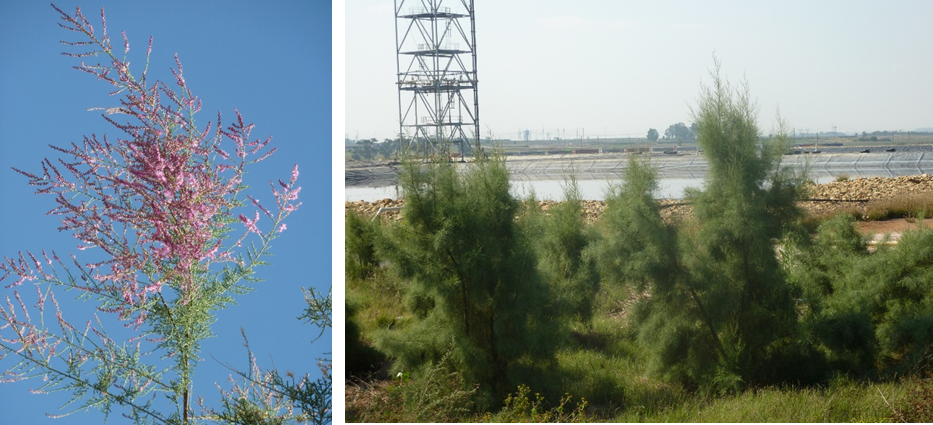The South African biocontrol programme for invasive Tamarix has begun, with host-specificity testing of Tamarisk beetles. This news comes from a recent review article by Dr Danica Marlin, C·I·B Core Team Member Prof Marcus Byrne and colleagues, all from the University of the Witwatersrand.
Tamarix are riparian trees or shrubs with a deep root system that can use up to twice as much water as other species. They easily outcompete native flora because they are fire, drought and flood tolerant, and are adapted to survive in highly saline soils. Due to their pretty pinkish-white flowers, it is suspected that invasive Tamarix were introduced into South Africa as ornamentals, and they now occur in most of South Africa’s nine provinces.

South Africa is currently following in the footsteps of the successful biocontrol programme against invasive Tamarix conducted in the USA, and strong collaborations have been set up between the South African and USA researchers.
However, the review article highlights the tricky situation in South Africa. We (a) have an indigenous Tamarix species, Tamarix usneoides, and (b) various Tamarix species are being used for phytoremeditation strategies for mine pollutants. “We require very stringent and comprehensive host-specificity testing of any potential biocontrol agent for Tamarix that we would like to use in South Africa against the invasive species, without inflicting damage on the indigenous T. usneoides or compromising the phytoremediation strategies” says Danica Marlin, first author of the study published in Biological Invasions.
First in line as potential biocontrol agents to be tested for the South African invasive Tamarix, are beetles in the genus Diorhabda. These beetles originate in Asia and have been found to be very effective and damaging in the USA. Both adults and larvae feed on the Tamarix leaves, and their feeding can kill a fully-grown Tamarix tree in four growth seasons (summers).
“It would be prudent to develop a national management strategy for invasive Tamarix while host-specificity testing is underway, so that other control options (chemical or mechanical) can be implemented in the meantime and while the Tamarix invasion is still at a level where control is achievable” says Marlin.
To the read the paper in Biological Invasions
Marlin, D., Newete, S.W., Mayonde, S.G. Smith, E.R. and Byrne, M.J. 2017. Invasive Tamarix (Tamaricaceae) in South Africa: current research and the potential for biological control Biological Invasions (2017). https://doi.org/10.1007/s10530-017-1501-6
For more information, contact Danica Marlin at danica.marlin@wits.ac.za



